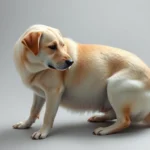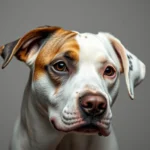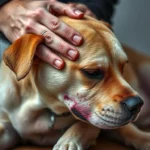
Introduction
Dog health care is a critical aspect of responsible pet ownership, ensuring our furry companions lead happy, healthy lives. One significant concern that dog owners and breeders should be aware of is cleft palate in dogs. This congenital condition affects the development of the mouth and can lead to various health problems if not properly addressed. Understanding cleft palate is vital for anyone involved in dog breeding or care, as it can impact the quality of life for affected dogs. This article serves as a comprehensive guide to cleft palate in dogs, covering everything from its definition and causes to treatment options and living with an affected dog.
Understanding Cleft Palate
Definition
A cleft palate is a congenital defect characterized by an abnormal opening in the roof of a dog’s mouth. This condition occurs when the tissues that form the palate do not fully come together during fetal development. Cleft palates can be classified into two main types: unilateral and bilateral.
- Unilateral cleft palate affects one side of the mouth, resulting in an opening that may vary in size and severity.
- Bilateral cleft palate involves both sides, leading to a more extensive opening and often more significant challenges for the affected dog.
Causes
The causes of cleft palate in dogs can be attributed to both genetic and environmental factors.
- Genetic factors: Certain breeds are predisposed to congenital defects, including cleft palate. Breeds such as Beagles, Bulldogs, and Collies are more frequently affected due to inherited traits.
- Environmental influences: Maternal health during pregnancy plays a crucial role. Factors such as poor nutrition, exposure to toxins, and certain medications can contribute to the likelihood of developing a cleft palate.
Prevalence
Statistics show that cleft palate occurrences vary among dog breeds. Research indicates that approximately 1 in 1,000 puppies is born with a cleft palate, but the frequency increases in specific breeds. Breeds like English Bulldogs, Chihuahuas, and Shih Tzus are particularly prone to this condition, making awareness critical for breeders and potential dog owners.
Symptoms of Cleft Palate in Dogs
Physical Signs
The most apparent symptoms of a cleft palate include visible abnormalities in the structure of the mouth. Some physical signs to look for include:
- An abnormal or split appearance in the roof of the mouth.
- Difficulty nursing in puppies due to an inability to create suction.
- Milk or food coming out of the nose during feeding.
Behavioral Signs
Puppies with a cleft palate may exhibit various behavioral signs indicating discomfort or distress:
- Increased irritability or crying during feeding times.
- Signs of aspiration pneumonia, including coughing or difficulty breathing, which can occur if food or liquid enters the lungs instead of the stomach.
Diagnosis
Veterinarians typically diagnose cleft palate through a physical examination. They may also use imaging techniques such as X-rays or ultrasounds to assess the extent of the condition and determine the best course of action for treatment.
Treatment Options
Surgical Intervention
Surgical repair is often the most effective treatment for dogs diagnosed with a cleft palate. Veterinarians typically perform this procedure when the dog is between 3 to 6 months old. The surgery aims to close the opening in the palate, allowing for normal feeding and reduced risk of aspiration pneumonia.
- Success rates for cleft palate surgery can be high, with many dogs leading normal lives post-operation. However, risks such as infections or complications during the healing process should be discussed with a veterinarian.
Non-Surgical Management
For puppies that are not candidates for surgery or for those awaiting surgery, non-surgical management is crucial.
- Nutritional support is vital. Affected puppies may require special feeding techniques, such as using a syringe or a specialized bottle, to ensure they receive adequate nutrition without aspirating.
- Feeding tools designed for cleft palate puppies can help make the feeding process more manageable, ensuring that they can thrive despite their condition.
Post-Operative Care
Post-operative care is essential to ensure a successful recovery. Owners should closely monitor their dogs for any signs of complications, such as:
- Excessive swelling or bleeding at the surgical site.
- Difficulty eating or drinking post-surgery.
- Signs of infection, such as fever or lethargy.
Regular follow-up visits to the veterinarian are crucial to track the healing process and adjust care as necessary.
Living with a Dog with Cleft Palate
Daily Care
Caring for a dog with a cleft palate requires special attention to daily routines:
- Feeding routines: Establish a consistent feeding schedule, utilizing specialized tools to minimize the risk of aspiration. Soft, easily digestible foods are often recommended.
- Hygiene practices: Regularly clean the dog’s mouth and face to prevent infections. Keeping the area around the feeding site clean is essential to avoid complications.
Monitoring Health
Regular veterinary check-ups are vital for maintaining the health of dogs with a cleft palate. Owners should be vigilant for signs that may indicate health issues, such as:
- Difficulty breathing or persistent coughing.
- Changes in appetite or energy levels.
- Unusual behavior, such as increased irritability or discomfort.
Quality of Life
Assessing the overall quality of life for a dog with a cleft palate involves evaluating their health and well-being. Socialization and training considerations are important:
- Engage in gentle training sessions to help the dog learn basic commands. Positive reinforcement methods are particularly effective.
- Ensure the dog has opportunities for socialization with other dogs and people, as this can enhance their emotional well-being.
Preventing Cleft Palate in Puppies
Responsible Breeding Practices
One of the most effective ways to combat the incidence of cleft palate in dogs is through responsible breeding practices:
- Genetic screening: Breeders should conduct health testing and screenings to identify potential hereditary issues in breeding pairs.
- Choosing the right breeding pairs: Avoid breeding dogs with a history of congenital defects to minimize the risk of passing on these conditions to offspring.
Maternal Care
Proper care during pregnancy is crucial for the health of the mother and her puppies:
- Ensure the mother receives optimal nutrition before and during pregnancy to support fetal development.
- Minimize exposure to toxins, stress, and certain medications that could affect the developing puppies.
Resources for Dog Owners
Veterinary Care
Finding a veterinarian experienced in treating cleft palate is vital for affected dogs. Look for veterinary clinics that specialize in surgical procedures and congenital defects.
Support Groups
Connecting with support groups, whether online forums or local community groups, can provide invaluable resources for dog owners. Sharing experiences and advice can help navigate the challenges associated with caring for a dog with a cleft palate.
Educational Materials
Several books, articles, and websites offer additional information on canine health and specific conditions like cleft palate. These resources can empower dog owners with knowledge and support.
Conclusion
Understanding cleft palate in dogs is essential for responsible ownership and breeding practices. By being informed about the symptoms, treatment options, and daily care required for affected dogs, owners can significantly enhance the quality of life for their furry companions. Emphasizing responsible breeding and maternal care is crucial in preventing this condition and ensuring that all dogs have the opportunity for a healthy, happy life. Supporting dogs with cleft palate through informed care and understanding can lead to fulfilling relationships between pet owners and their beloved pets.









